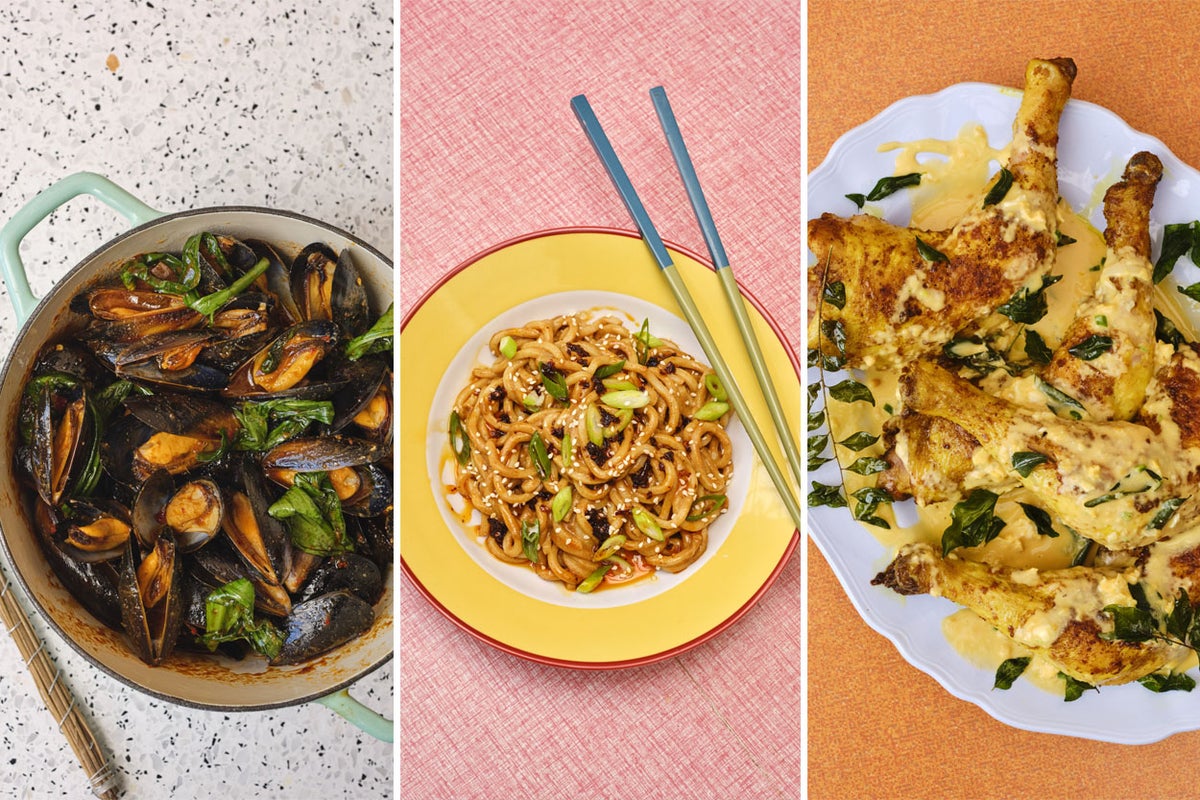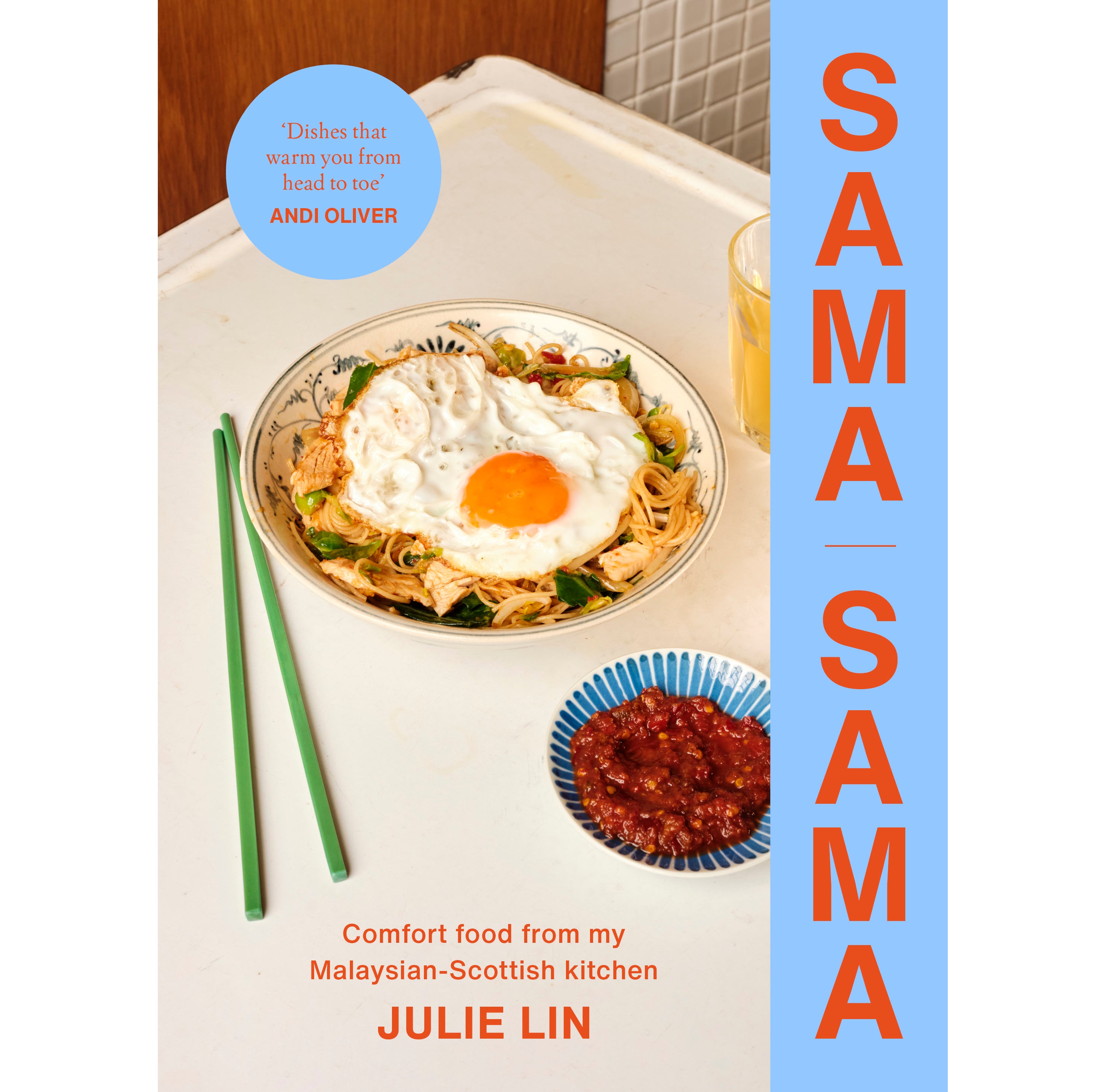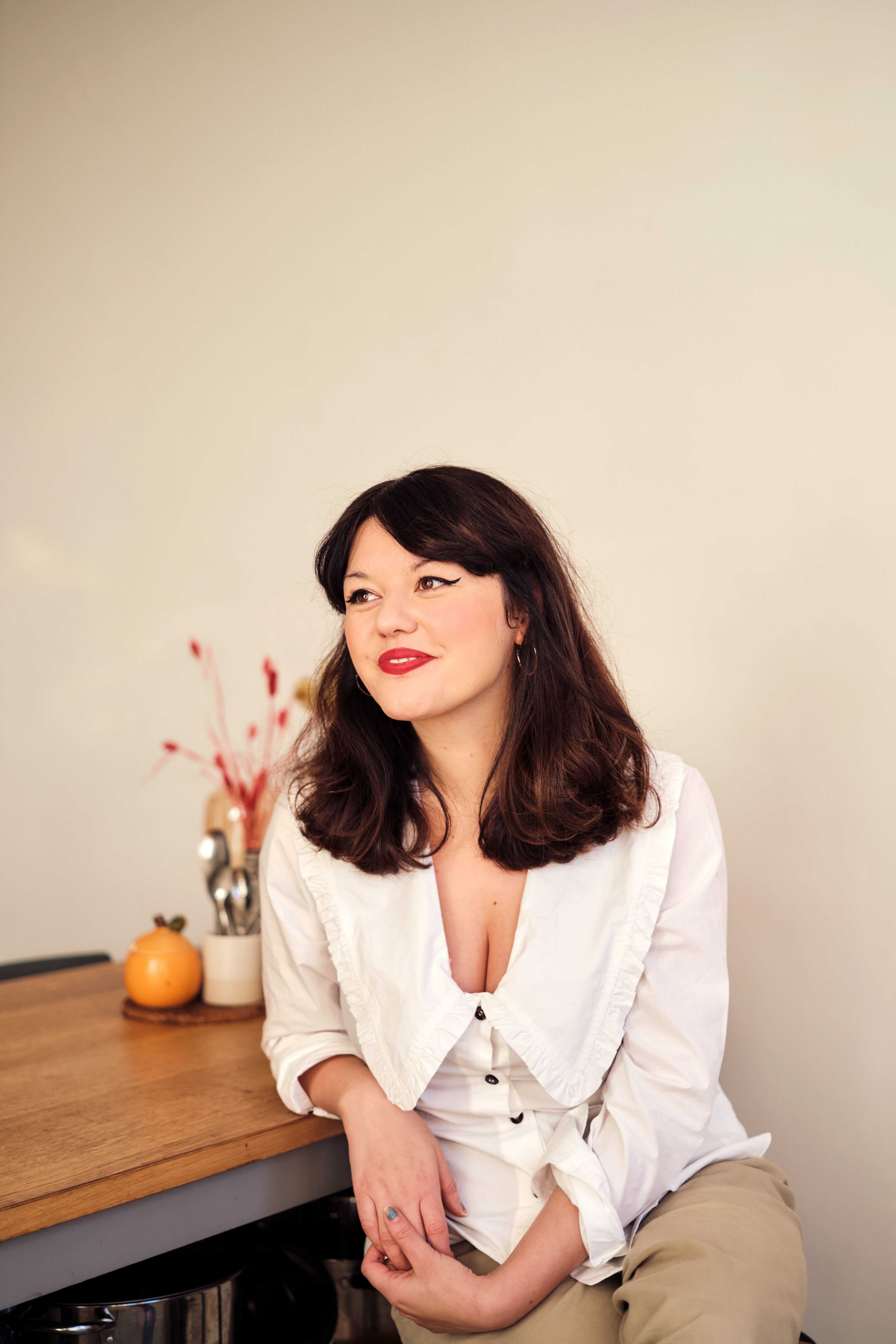
Food is such a huge part of Malaysian identity that chef and author Julie Lin says, “I would say food is the culture – it’s such a starting point when it comes to everything.”
Growing up in Glasgow, with a Scottish dad and Malaysian (Malay-Chinese) mum – who moved to the UK in the 1970s as a nurse – Lin says her mum “couldn’t speak the language so would communicate through food – she’d always use food as a means to express friendship with people.”
Embracing her mixed heritage has been a journey for Lin, who competed in BBC’s MasterChef in 2014. “I’ve learned to nourish my soul with food and use cooking as a comforting bridge that connects me to my roots,” she writes in her debut cookbook, Sama Sama – which translates to “same same”.
She wanted the book to be based on being Malaysian-Scottish, “and finding authenticity within that – sometimes we have very narrow views on what we think of authentic cuisine”. She hopes it really “resonates with people who are mixed”.
“In my own journey as a mixed-race person, I’ve found that the meals I create and cherish are much like my identity: a blend of flavours, traditions and stories that refuse to be boxed into a single category – but respectfully they honour culture,” the 33-year-old writes.
So, if you’re new to Malaysian food – what do you need to know?
It’s made up of many different parts
“Because Malaysia is made up of so many different races and religions, there are different types of cuisines,” explains Lin.
From Malay-Indian and Chinese-Malay to a Portuguese influence, “it all amalgamates to being Malaysian,” says Lin. “It’s had so much colonisation in the past, and there’s been so much movement that Malaysia is like food in its very essence.”

The key ingredients
Malaysian food is a vast cuisine, with influence from many surrounding Asian countries, but “in a Malaysian kitchen, curry leaf is really important – that leans into the more Indian-Malay side of things,” she explains.
“You’d also find a whole load of lemongrass in there, that leads to a sambal which is a condiment that most people will have in their fridges (either made themselves, or there are really lovely producers out there) – a chilli paste you have with everything.”
Candlenuts are key too, which have a high fat content. Lin uses some alternatives, like Brazil nuts. And, of course, coconut milk.
The classic dishes
You may have heard of te ayam (chicken satay) or nasi goreng (fried rice), but other classics include bucatini carbonara – similar to the Italian pasta dish but with lap cheong, a Chinese sausage.
“It’s got really lovely oils that flavour the dish. I’ll make something along those lines quite a lot,” says Lin. While, “rojak is a really lovely Malaysian fruit and vegetable salad that’s got sweetness and tanginess and sharpness in there”.
Another classic is a smashed chicken – called ayam penyet – “You lightly marinate and then fry a chicken leg and smash it. Like with smashed cucumbers, when you smash something, you kind of bruise it, and you release new flavours. I put a really punchy green sambal on top, to spike it with chilli and have that with rice. It’s really easy to do.”

Light or dark soy sauce matters
Quite a lot of supermarket soy sauces won’t even say whether they’re light or dark, says Lin – “which is a huge difference”.
“If you cook a recipe that was supposed to have light soy sauce, dark is going to end up really salty. Light soy sauce, or soy beans, haven’t been aged for long. Dark soy sauce is aged for a lot longer and so you get a trickley, slightly thicker viscosity sauce.”
She equates using both as if you would shampoo and conditioner on your hair. “You always use shampoo – which is the light soy sauce – and I use a bit more of that. I need that to build flavour into the dish and it’s got that saltiness in it.
“But I do want a bit of dark soy sauce at the end – that’s going to give it colour, it’s going to give it caramelisation, it’s going to give it a bit more of an intense, salty flavour.”
British ingredients work great with Malaysian flavours
Born and raised in Scotland, Lin has taken a huge amount of inspiration from local ingredients. “We’re surrounded by lots of venison and a huge abundance of seafood. Mussels are the most sustainable seafood and I remember going to pick them with my Seanair – my Scottish granddad [a Gaelic term]. Then we would do them with a sambal and cook them off.
“Using the ingredients around you and putting them into dishes that have come from immigration is a really good way to get us to use produce more locally,” says Lin.
“Mum’s always said, ‘We should continue tradition with respect, but why shouldn’t there be room for new things being made?’”
Buy frozen noodles
The easiest dish “that will literally take 10 minutes – because I’ve timed it but I think you can do it in less than that” is garlic udon noodles. “Buy a good packet of udon noodles, I’ve taken to buying noodles that are actually frozen from my Asian supermarket. I only learned recently that the frozen ones are fab, frozen but fresh,” says Lin.
For a quick noodle dish, fry off some ginger and garlic and toss the frozen noddles in, along with Asian sesame paste, dark soy, light soy and loads of chilli oil. “It sounds really plain but use a bit of water to make sure everything’s really glossy and creamy – it’s one of my favourites.”
Don’t be afraid to try something new
“I would say not to be afraid of it, because it’s not technically difficult,” says Lin. Some recipes have longer ingredients lists and some are simpler – “there needs to be space for both of those things because, sometimes, that’s how you need to cook. There’s some people who want to spend a Sunday cooking the paste for a Singapore chili crab, and there’s some people that have 10 minutes.”
‘Sama Sama’ by Julie Lin (Ebury Press, £28).
This creamy garlic udon with chilli oil is the solo supper you’ll crave again
These spicy sambal mussels with wild garlic are pure comfort in a bowl
Golden, crispy chicken in a rich salted egg yolk and curry leaf sauce? Yes please
Trying to eat more protein? These 13 healthy recipes make it easy (and delicious)
How a Weymouth fish market became one of the UK’s best seafood spots







